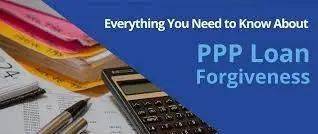Understanding Loan Forgiveness: How to Navigate the Process and Maximize Your Benefits
#### What is Loan Forgiveness?Loan forgiveness refers to the cancellation of a borrower's obligation to repay some or all of their student loans. This finan……
#### What is Loan Forgiveness?
Loan forgiveness refers to the cancellation of a borrower's obligation to repay some or all of their student loans. This financial relief can significantly ease the burden of debt for many individuals, particularly those who have pursued higher education. The concept of loan forgiveness is particularly relevant in the context of federal student loans, where specific programs are designed to provide relief to borrowers under certain conditions.
#### Types of Loan Forgiveness Programs
There are several types of loan forgiveness programs available, each with its own eligibility criteria and application processes. Some of the most common programs include:
1. **Public Service Loan Forgiveness (PSLF)**: This program is designed for borrowers who work in qualifying public service jobs. After making 120 qualifying monthly payments under a qualifying repayment plan, borrowers may have the remaining balance of their Direct Loans forgiven.
2. **Teacher Loan Forgiveness**: Teachers who work in low-income schools or educational service agencies can qualify for forgiveness of up to $17,500 on their Direct Subsidized and Unsubsidized Loans after five consecutive years of service.
3. **Income-Driven Repayment (IDR) Forgiveness**: Borrowers enrolled in an IDR plan may have their remaining loan balance forgiven after making payments for 20 or 25 years, depending on the specific plan.
4. **Veterans Affairs (VA) Loan Forgiveness**: Certain veterans may qualify for loan forgiveness based on their military service or disability status.
#### Eligibility Requirements for Loan Forgiveness

Each loan forgiveness program has its own set of eligibility requirements. Generally, borrowers must meet specific criteria related to their employment, repayment plan, and the type of loans they hold. For example, to qualify for PSLF, borrowers must work full-time for a qualifying employer and make 120 qualifying payments. It is crucial for borrowers to thoroughly research the requirements of each program to determine their eligibility.
#### The Application Process for Loan Forgiveness
The application process for loan forgiveness can vary depending on the program. Generally, borrowers will need to complete the following steps:
1. **Confirm Eligibility**: Before applying, borrowers should confirm their eligibility for a specific loan forgiveness program by reviewing the requirements.
2. **Complete the Application**: Most programs require borrowers to submit an application form. For PSLF, borrowers must submit the Employment Certification Form annually to ensure their payments count toward forgiveness.
3. **Maintain Documentation**: Borrowers should keep detailed records of their payments, employment, and any correspondence with their loan servicer. This documentation will be crucial if any issues arise during the forgiveness process.
4. **Follow Up**: After submitting the application, borrowers should follow up with their loan servicer to confirm that their application is being processed and to address any potential issues.
#### Common Challenges and Tips for Successful Loan Forgiveness
While loan forgiveness can provide significant relief, borrowers may encounter challenges during the process. Some common issues include:
- **Confusion Over Eligibility**: Many borrowers are unaware of the specific requirements for different forgiveness programs. It is essential to thoroughly research and understand the criteria for each program.
- **Inaccurate Payment Tracking**: Keeping track of qualifying payments can be challenging, especially for borrowers who have switched repayment plans or loan servicers. Regularly reviewing payment history and maintaining accurate records can help mitigate this issue.
- **Changes in Employment**: Changes in employment status can affect eligibility for certain forgiveness programs. Borrowers should be proactive in understanding how job changes may impact their loan forgiveness prospects.

To increase the likelihood of a successful loan forgiveness application, borrowers should:
- Stay informed about changes in loan forgiveness policies and programs.
- Seek assistance from financial advisors or organizations specializing in student loan forgiveness.
- Utilize online resources and forums to connect with other borrowers who have successfully navigated the loan forgiveness process.
In conclusion, loan forgiveness can be a powerful tool for alleviating student loan debt. By understanding the various programs available, meeting eligibility requirements, and following the application process diligently, borrowers can maximize their chances of receiving forgiveness and achieving financial freedom.